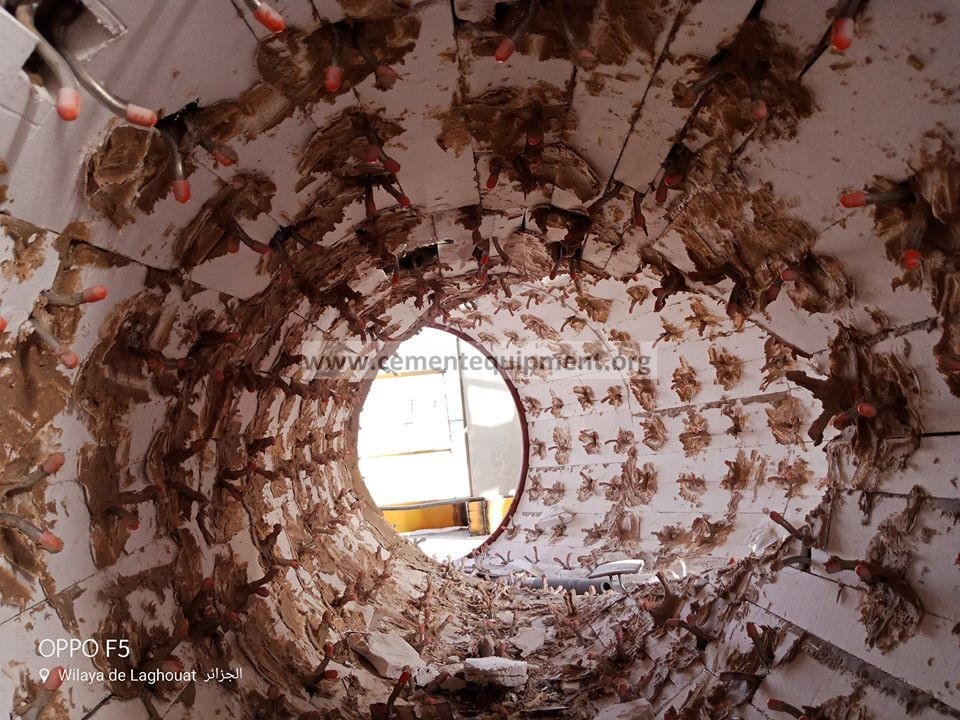Contents
The reason of kiln Grate Cooler snowman and How to Prevent it.
TO DOWNLOAD THIS POST AND MOST IMPORTANT MATERIAL IN CEMENT INDUSTRY CLICK HERE NOW

What is a snowman?
The so-called snowman in the grate cooler is a name get from the image itself. In fact, it means the clinker accumulates under the rotary kiln before go through into cooler which become higher like a snowman. In severe cases, it can be blocked at the kiln outlet and the clinker can not move out.
The main causes of snowman:
1. Improper coordination of cooler and rotary kiln
The horizontal position of the grate cooler and the rotary kiln must be coordinated to ensure that the longitudinal center-line of the grate cooler and the rotary kiln are offset by a reasonable distance. If there is no experience, designed the centerline of the grate cooler and the rotary kiln on same line, it will cause frequent snowman to be built and affect the normal operation of the kiln.
2. There are more clinker flying sand or large amount of liquid phase.
For the pre-calcination kiln, if the calcination temperature is too high, it is easy to increase the clinker dust, that means more flying sand. At this time, the cooling efficiency is low and the dust cycle is intensified, which may cause the “red river” in the grate cooler. When it become sever it will cause snowman. Excessive high temperature or an increase in low melting point alkali components will also cause too much liquid phase. Excessive liquid phase combined with too much clinker dust, forming a floating layer, although The grate plate reciprocates as usual, but the clinker cannot be moved away. As the clinker of the kiln keeps falling, the snowman of the grate cooler is inevitable.
3. Improper operation of grate bed structure and kiln
The structure of the grate bed of the grate cooler is unreasonable, the operation is unreasonable, the clinker has uneven particle size, all are the cause of “snowman”.
4. Improper raw material components
A large number of production practices have proven that the improper components caused the flying sand phenomenon which is the main cause of the snowman in the cooler.
5.Secondary combustion of incompletely burned pulverized coal particles occurs.
The “snowman” phenomenon occurs the main reason is flying sand, and the secondary combustion of pulverized coal is the second main reason. In the case of flying sand, in order to strengthen the calcination and increase the firing temperature, the amount of pulverized coal is generally increased. Due to the excessive amount of pulverized coal, it is easy to cause the incompletely burned pulverized coal to be wrapped in clinker. In the case of uneven fly ash clinker production, some unburned pulverized coal enters the grate cooler along with the clinker, under the influence of kiln rotation and high-speed air flow particles are segregated. Due to the high air temperature and sufficient oxygen content in the grate cooler, the incompletely burned pulverized coal particles undergo secondary combustion. The secondary high temperature and liquid phase appear on the surface. At the same time, due to the poor ventilation rate between the fine particles, the wind is not easy to blow through, and the fine particles cannot be cooled as soon as possible, causing it stick on the grate, resulting in a snowman.
6. Channeling raw materials will also form a pile of “snowman” phenomenon.
The channeled raw materials contain a considerable part of unburned coal powder, which will also cause the separation of small and large particles. Because of the high oxygen density and high temperature in the caster cooler, The secondary combustion occurs, so that the clinker continues to react in the caster cooler, resulting in a liquid phase on the surface of the fine clinker or the clinker particles that have been burned through, and the phenomenon of “snowman” when the fan cannot blow through. The situation may be: the high temperature zone is moved forward excessively, the secondary air temperature is too high, and the material at the front of the caster cooler is not discharged in time with the negligence during operation. Under the condition that the clinker has not completely lost the liquid phase, Part of it is sticky, which makes the materials pile up naturally, forming a loose “snowman”.
How to prevent and take measures.
1. Arrange the relative positions of grate cooler and rotary kiln correctly.
2. Stabilize the thermal system in the kiln, avoid excessive kiln temperature and liquid phase quantity, and carefully observe the fire
3. Improve the structure of grate bed;
4. The high-sulfur raw coal is limited to the factory and used together to ensure that the SO3 in the pulverized coal entering the kiln does not exceed the standard;
5. Appropriately reduce n rate value, increase Fe2O3 content in clinker and ensure clinker granulation.
6, kiln head to reduce coal properly, reduce the temperature of burning belt
7. Ensure the matching of wind coal, reduce the moisture of coal powder and avoid incomplete combustion.
8. It is strictly prohibited to burn the top of the fire in a short time, stretch the flame appropriately and reduce the atmosphere.
9. Adjust the shape and position of the flame to prevent coal dust from joining the clinker;
10. Appropriately increase the kiln speed and shorten the residence time of materials in the sintering zone;
11. Increase the cooling air volume, start the air gun, and explode the material;
12. If the kiln is seriously stopped, clean it manually from the side inspection opening.
TO DOWNLOAD THIS POST AND MOST IMPORTANT MATERIAL IN CEMENT INDUSTRY CLICK HERE NOW